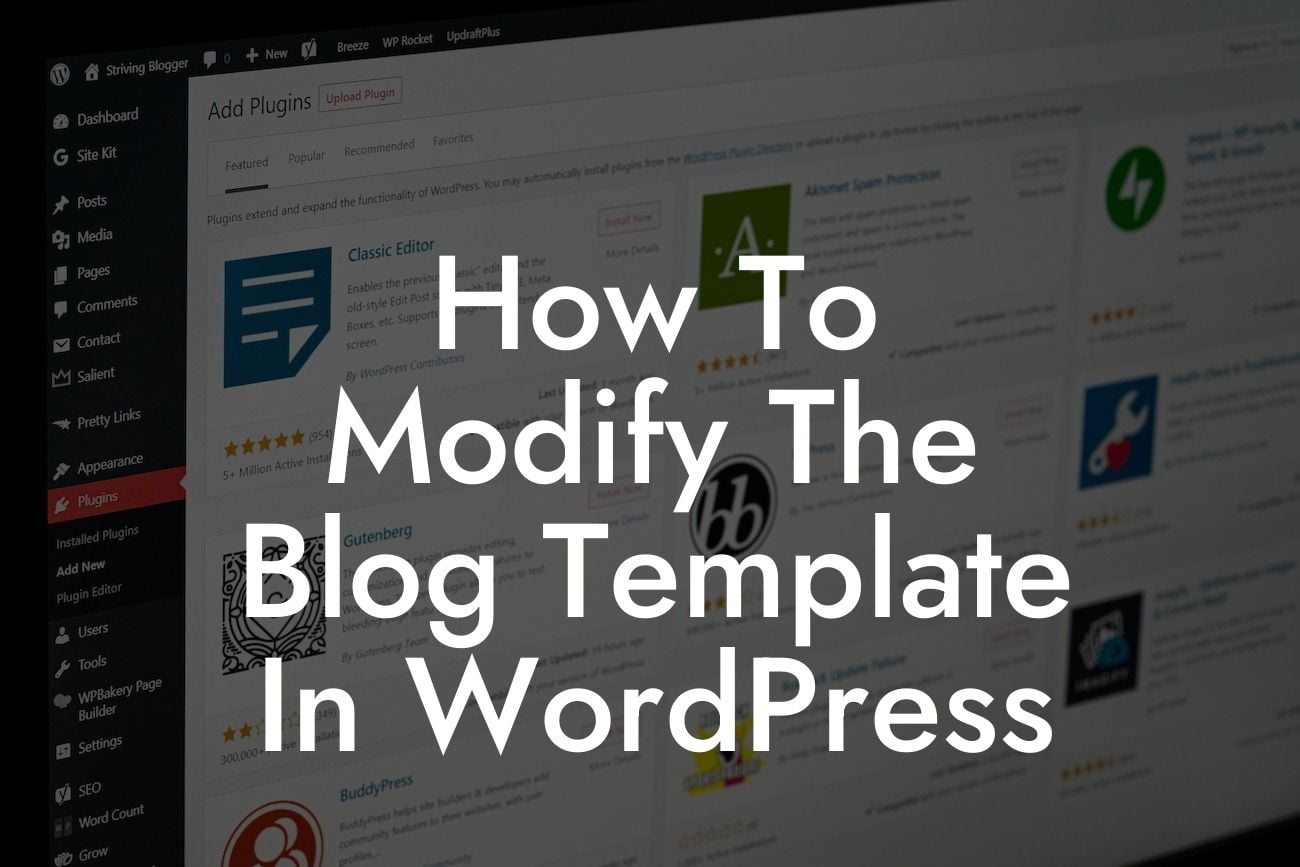Are you a small business owner or entrepreneur looking to customize your blog template in WordPress? If so, you've come to the right place! In this comprehensive guide, we will walk you through the process of modifying the blog template to create a unique and compelling online presence. Say goodbye to generic designs and cookie-cutter solutions, and say hello to a website that truly reflects your brand and captivates your audience. Get ready to unleash the power of WordPress and take your website to the next level!
Modifying the blog template in WordPress may sound intimidating, but fear not! We have broken down the process into simple steps that even beginners can follow. Let's dive in:
1. Choose the Right Theme:
Before diving into customizations, it's essential to choose a WordPress theme that aligns with your brand and business goals. Consider factors such as layout, color schemes, and features. You can browse through thousands of free and premium themes in the WordPress theme directory or explore third-party theme marketplaces.
2. Access Template Files:
Looking For a Custom QuickBook Integration?
In order to modify the blog template, you need to access the template files. This can be done through the Appearance section in your WordPress dashboard. Navigate to Appearance > Theme Editor, and you will see a list of template files on the right-hand side. The most commonly modified file for blogs is the "single.php" file.
3. Customize Template Files:
Once you have identified the template file you want to modify, click on it to open the code editor. However, it is crucial to proceed with caution and make backup copies of any files you plan to modify. Within the code editor, you can make changes to elements such as the header, footer, sidebar, and post layout. You can also add custom CSS to change the appearance of various elements.
4. Utilize Plugins:
Plugins are a powerful asset in WordPress customization. There are various plugins available that offer easy-to-use interfaces for modifying templates without writing code. These plugins can provide additional functionality, such as adding custom widgets, social sharing buttons, or optimizing your blog for search engines.
How To Modify The Blog Template In Wordpress Example:
Let's say you want to modify the layout of your blog posts to include a featured image at the top and a related posts section at the bottom. By accessing the "single.php" file and adding the necessary HTML and CSS, you can achieve this desired layout. Additionally, you can use a plugin like "Related Posts for WordPress" to automate the process of displaying related posts.
Congratulations! You have successfully learned how to modify the blog template in WordPress. Take this newfound knowledge and elevate your online presence. Remember, DamnWoo offers a range of awesome WordPress plugins specifically designed for small businesses and entrepreneurs like you. Explore our website for more guides, tips, and plugins to supercharge your success. Don't forget to share this article with others who might find it valuable. Together, let's create extraordinary websites!













